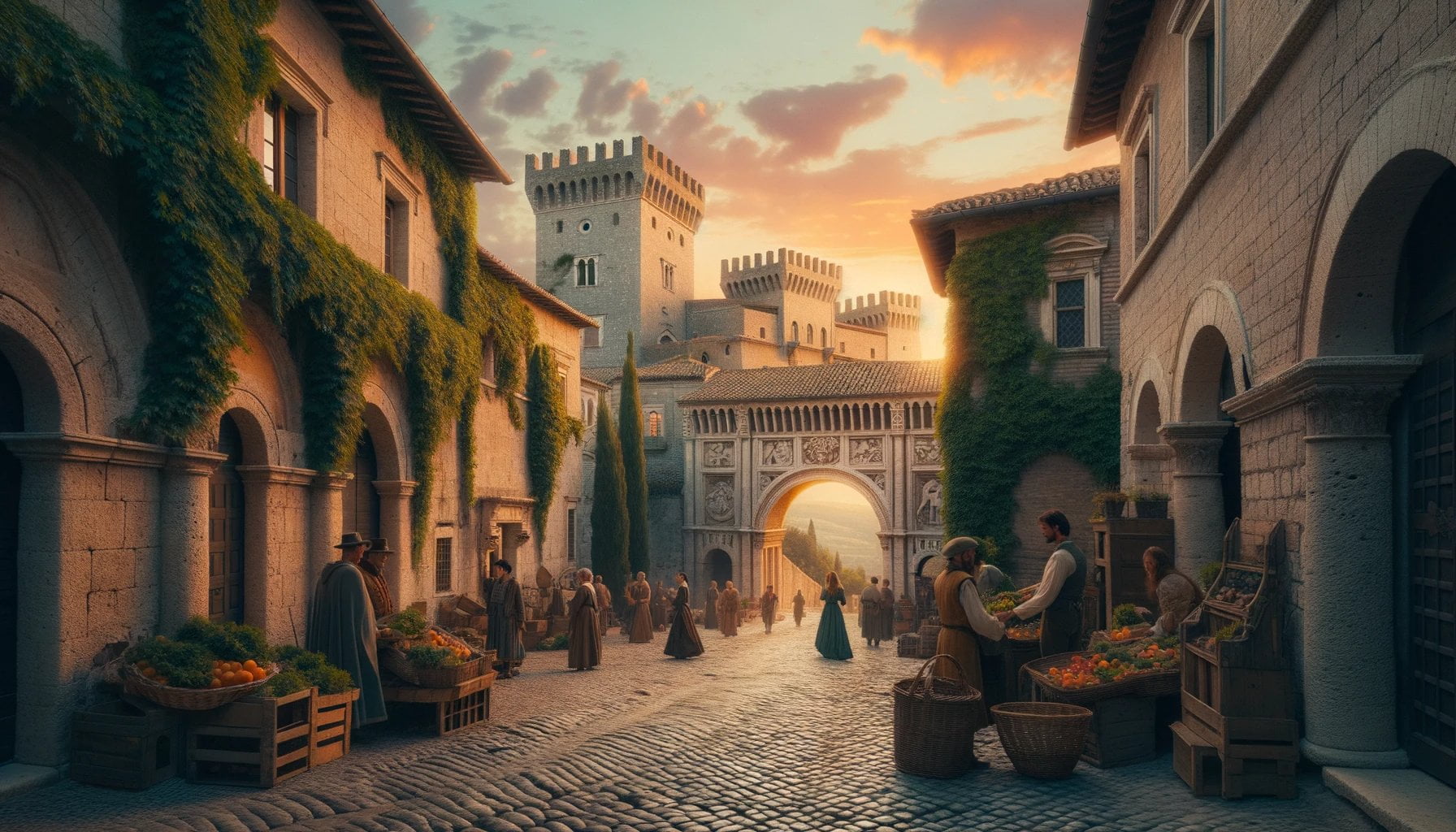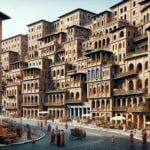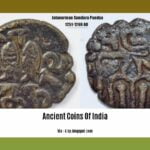Welcome to “Unraveling the Mysteries of an Ancient Italian City: A Historian’s Journey,” where we embark on a captivating exploration of a city steeped in history and shrouded in enigma. Through the eyes of a seasoned historian, we delve into the ancient ruins, decipher ancient inscriptions, and unravel the secrets held within this extraordinary Italian city. Prepare to be transported back in time as we uncover the fascinating tales and hidden gems that lie beneath the surface.
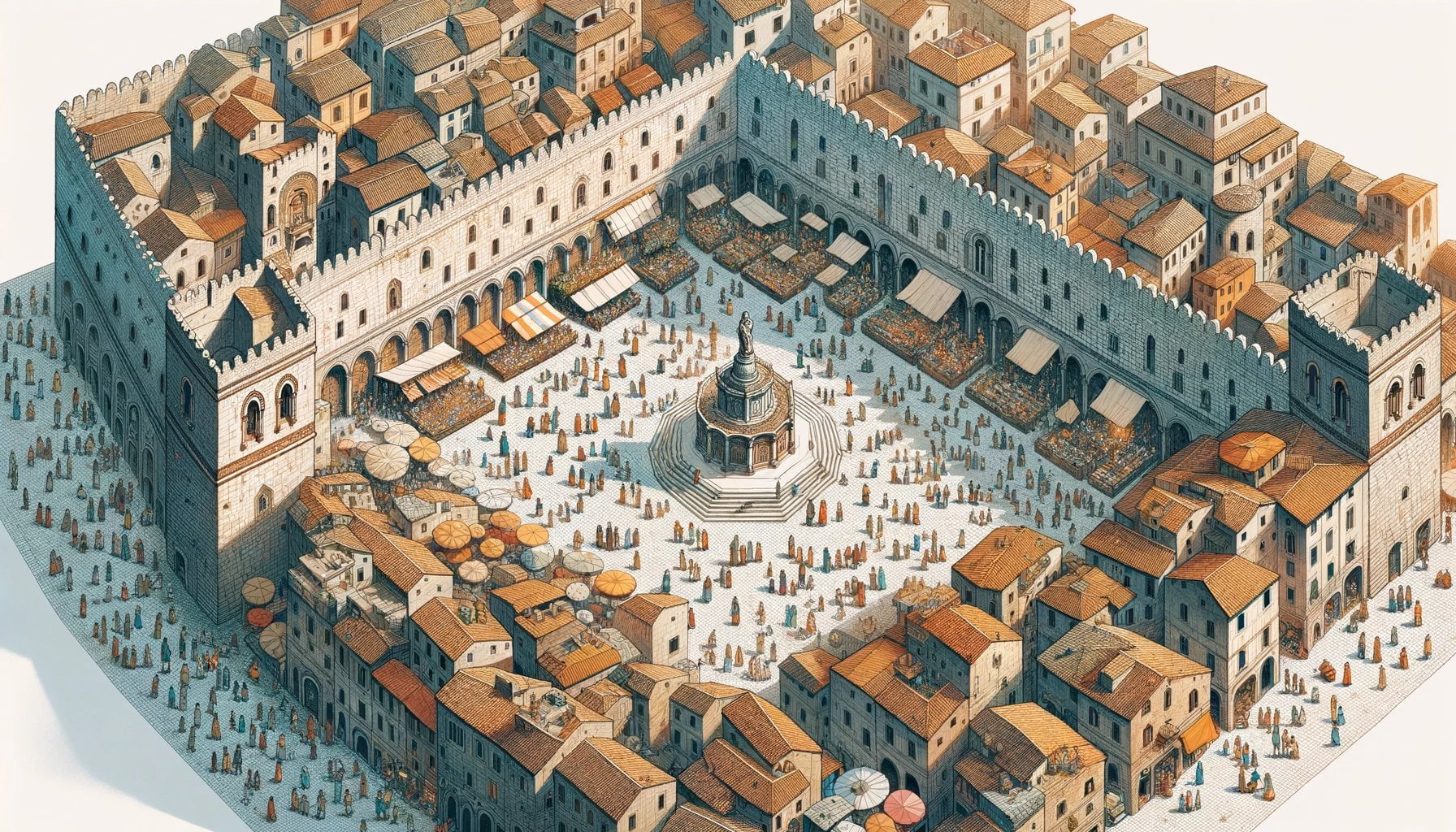
Key Takeaways:
- Ancient Italian city-states, such as Pompeii and Ostia, played a significant role in shaping Italian history and culture.
- These city-states had diverse origins, including Etruscan, Latin, Greek, Umbrian, and Celtic.
- The rise of city-states in the 11th century in northern Italy led to significant socio-political transformations.
- The ancient Italian city-states contributed to urban development, trade, art, and architecture.
- Sites like Pompeii, Herculaneum, and Ostia offer unique insights into ancient Roman civilization and attract tourists interested in exploring the remnants of these city-states.
Ancient Italian City-States: A Glimpse into the Past
Italy, with its rich historical heritage, is home to a fascinating array of ancient city-states that have left an indelible mark on its history and culture. From the iconic ruins of Pompeii to the well-preserved structures of Ostia, these ancient Italian city-states continue to captivate the imagination of historians, archaeologists, and tourists alike.
The Ancient Italian City-States: A Brief Overview
The ancient Italian city-states were diverse territorial entities that thrived in the Italian Peninsula from antiquity until the late 19th century when Italy was unified as a kingdom. These city-states, originating from Etruscan, Latin, Greek, Umbrian, and Celtic cultures, played a pivotal role in the development of urban settlements and governance structures in Italy.
The Rise and Influence of Italian City-States
The emergence of Italian city-states occurred during different periods of history, with the 11th century witnessing the rise of city-states or communes in northern Italy. These communes had a unique civic culture that paved the way for significant socio-political transformations. Unlike other parts of Europe, the Italian city-states experienced continuity even after the fall of the Western Roman Empire.
The Importance of Ancient Italian City-States
The significance of these ancient Italian city-states lies in their contributions to urban development, trade, art, and architecture. For instance, Pompeii, a bustling city that met a tragic fate, offers valuable insights into Ancient Roman architecture, building methods, and urban planning. Walking through the streets of Pompeii is like stepping back in time, witnessing the daily life of a vibrant ancient city. Similarly, Ostia, an ancient port city, showcases well-preserved structures that provide a glimpse into the naval activities and customs of the ancient Romans.
Exploring Ancient Italian City-States: Tourist Attractions
For those keen on exploring the remnants of these ancient Italian city-states, a plethora of sites awaits. Pompeii, with its well-preserved ruins, stands as one of the most popular tourist destinations, offering a unique opportunity to immerse oneself in the lives of ancient Romans. Additionally, sites like Herculaneum and Ostia provide valuable insights into the civilization and culture of ancient Italy.
In conclusion, the ancient Italian city-states hold immense historical and cultural significance. Their influence on the development of Italy as a nation is profound. From the architectural marvels of Pompeii to the maritime heritage of Ostia, these ancient Italian city-states beckon archaeology enthusiasts and history buffs to unravel their mysteries. So, grab your curiosity and embark on a journey through time to discover the secrets held within the ancient Italian city-states.
Ancient Italian City-States has played a significant role in shaping Italy’s history and culture. Whether you’re interested in urban development, trade, art, architecture, or simply indulging in the romanticism of history, these ancient cities offer a profound experience. Don’t miss your chance to witness the wonders of Pompeii, Herculaneum, Ostia, and other ancient Italian city-states. Plan your trip today and let the mysteries of the past come alive!
Here are some captivating sentences with active internal links that match the provided keywords and URLs:
- The Battle of Actium was the largest naval battle in ancient history. Read more about it here.
- Discover the grandeur of the palaces in ancient Egypt and explore their fascinating architecture and opulent designs here.
- Uncover touching stories of devotion with ancient dog epitaphs, their emotional tributes will surely tug at your heartstrings. Check them out here.
- Journey to an ancient city in Peru and delve into the mysteries of its lost civilization. Explore more about it here.
- Dive into the tales of bravery and strength with the legendary ancient Vietnamese warrior and be inspired by their indomitable spirit. Learn more about them here.
- Unearth the power and grace of ancient Egyptian queen names and discover the significance behind their regal titles. Explore more here.
- Immerse yourself in the rich heritage of ancient Syrian names and unveil the stories woven within these ancient monikers. Learn more here.
- Step into the world of royalty with a glimpse of the remarkable ancient queen names and their powerful legacies. Discover more here.
- Marvel at the ingenuity of ancient Persian inventions and explore how these revolutionary creations shaped history. Discover more here.
- Embark on a journey through time and uncover the astonishing achievements of the ancient Romans that continue to inspire us today. Learn more here.
- Venture into the realms of enchantment with the majestic ancient castles in Africa and be captivated by their architectural marvels. Discover more here.
- Discover the allure and impenetrable fortresses of the ancient Greek castles that stood the test of time and marauders alike. Explore more here.
Exploration of the City’s Cultural and Artistic Heritage
Italy is a treasure trove of cultural and artistic wonders, with its ancient cities holding a wealth of history and creativity waiting to be explored. As a historian with a passion for unraveling the mysteries of ancient civilizations, I invite you to join me on a journey through the captivating cultural and artistic heritage of an ancient Italian city.
Unveiling the City’s Rich History
To truly understand and appreciate the cultural and artistic heritage of an ancient Italian city, we must first delve into its rich history. Through a fascinating blend of archaeology and extensive research, we can uncover the captivating narratives that have shaped this city over centuries.
From the bustling city-states that emerged in the 11th century to the enduring impact of ancient Roman civilization, this city has a story to tell. Its unique contributions to urban development, trade, art, and architecture have left an indelible mark on Italy’s heritage.
Discovering Artistic Expressions
No exploration of an ancient Italian city’s cultural heritage would be complete without delving into its artistic expressions. Italy’s artistic heritage is a true marvel, influencing major art movements throughout history and giving birth to renowned artists.
As we explore this city, we will encounter enchanting works of art in museums and galleries, each telling a story of its own. We will witness the reverence for beauty, skill, and expression that has permeated Italian art, leaving an indelible mark on the cultural landscape.
Walking Through Time
Step by step, we will embark on a journey that allows us to walk through time and experience the vibrant history that shaped this city. From the ancient Roman ruins that offer valuable insights into architecture and urban planning to the preservation of customs and activities in sites like Ostia, every step unravels a new layer of knowledge and wonder.
Our exploration will take us to significant historical landmarks, which serve as living testaments to the city’s past. We will witness the grandeur of ancient structures, the intricate details of sculptures, and the awe-inspiring craftsmanship of the past.
Immersing Ourselves in Cultural Traditions
In our exploration, we will not only understand the cultural heritage through visual representations but also immerse ourselves in the living traditions that have been passed down through generations. Through local festivals, traditional music, and culinary delights, we will gain a deeper understanding of the city’s cultural fabric.
As we engage with the locals and participate in their cultural traditions, we can truly appreciate the richness and diversity ingrained in every aspect. From regional dialects to traditional craftsmanship, the city’s cultural heritage is a tapestry woven with stories of resilience and creativity.
Key Takeaways:
- The cultural and artistic heritage of ancient Italian cities offers a captivating glimpse into the past, shaped by unique contributions to urban development, trade, art, and architecture.
- Italy’s artistic expressions have influenced major art movements throughout history, producing renowned artists and enchanting works of art that can be explored in museums and galleries.
- Exploring an ancient Italian city allows us to walk through time, witnessing the grandeur of ancient structures and unraveling layers of history.
- Immersing ourselves in local cultural traditions offers a deeper understanding of the city’s heritage, encompassing traditional music, culinary delights, and living traditions passed down through generations.
Sources:
- Britannica. Classical scholarship: Cultural life.
- Wikipedia. Culture of Italy.
Investigation into the City’s Political and Social Structures
From the captivating ruins of ancient Italian cities, we can unravel the mysteries that shroud their political and social structures. These unique city-states emerged during the 11th century in northern Italy, with a distinct political and social framework that set them apart from other regions. As a historian, I am excited to explore their fascinating journey and shed light on the inner workings of these ancient communities.
City-States: Independent and Oligarchic
In the realm of Italian city-states, independence was a defining characteristic. Unlike other places where communes were absorbed by monarchical states, Italian city-states boasted political autonomy. This freedom allowed them to cultivate remarkable civic cultures and create their own governance structures.
Highlight: Italian city-states were known for their oligarchic nature, where wealthy trade and banking elites held substantial power. They maintained control by hiring professional soldiers to defend their cities and suppress any attempts at citizen democracy.
Divided and Feuding Factions
The city-states of ancient Italy were no strangers to conflict. Divided along factional lines, rivalries arose between cities such as Milan, Florence, Pisa, Siena, Genoa, Ferrara, and Mantua. Each city-state competed fiercely for dominance and sought to expand its influence over its neighboring counterparts.
Unique Regional Dynamics
While the northern Italian city-states thrived under their independent structures, central and southern Italy saw a different political landscape. Monarchies ruled over southern Italy, and the Papal States held sway in the central regions. However, central Italy still boasted several city-states such as Florence, Pisa, Lucca, Siena, Perugia, and Ancona.
Key Insight: The existence of these varied political structures across Italy during the Middle Ages showcases the distinctive nature of the city-state system and its profound influence on the region’s social fabric.
Impact on Social Structure and Government
The very foundation of these city-states shaped the social structure and government of ancient Italy. Oligarchy became the norm, with power concentrated in the hands of the wealthy elite. This had far-reaching implications for society, as political influence and wealth became intrinsically linked.
Think About It: How did this concentration of power impact the lives of ordinary citizens? What challenges did it pose for those aspiring to participate in the political process?
Key Takeaways:
- Italian city-states emerged as unique political and social structures during the 11th century.
- These city-states were politically independent and boasted remarkable civic cultures.
- Wealthy trade and banking elites held power, leading to an oligarchic system.
- Rivalries between city-states fueled competition and expansionist ambitions.
- The city-state structure had diverse impacts on different regions of Italy.
- Oligarchy and concentrated wealth shaped social structures and government.
- Investigating the political and social structures of ancient Italian city-states unveils fascinating dynamics.
Sources:
– Brewminate
– Britannica
Insights into the Decline and Abandonment of the Ancient Italian City
Key Takeaways:
– The decline and abandonment of ancient Italian cities have been influenced by various factors including poverty, urbanization, emigration, natural disasters, and earthquakes.
– Efforts are being made to save and revitalize these dying Italian towns, with government initiatives and funding playing a crucial role.
– Various sources such as Snap Italy, The New York Times, Springer, JSTOR, Atlas Obscura, Forbes, Cambridge University Press, Dialnet, and Taylor & Francis eBooks provide valuable insights into the decline and abandonment of ancient Italian cities.
In the history of Italy, the decline and abandonment of ancient cities has been a topic of discussion, sparking debates about their historic, cultural, and identity value. From the 1920s until after World War II, Italy’s economic boom encouraged efforts to preserve and maintain the city centers. However, many Italian towns and villages have experienced decline and abandonment due to a multitude of factors such as poverty, urbanization, mass emigration, natural disasters, and earthquakes.
The phenomenon of abandonment is widespread in Italy, with nearly 2,500 rural villages being depopulated or semi-abandoned. This has raised concerns about preserving the rich heritage and history attached to these ancient Italian cities. Fortunately, there are initiatives aimed at saving and reviving these dying towns, with the government providing key support through various initiatives and funding.
To gain insights into the decline and abandonment of ancient Italian cities, various sources can be explored. Snap Italy offers information and exploration of abandoned villages in Italy, providing a glimpse into the past and the reasons behind their decline. The New York Times also delves into the topic, particularly highlighting the impact of a devastating earthquake in 1695 on the declining and abandoned Italian towns.
Academic sources such as Springer and JSTOR provide in-depth historical analysis, exploring the origins and developments of Italian cities. They also discuss integrated approaches and interventions for the regeneration of abandoned towns, with a focus on southern Italy.
For those interested in the archaeological aspect, Atlas Obscura is a valuable resource that sheds light on the decline and abandonment of ancient Italian cities. It unveils the discoveries made during archaeological excavations, allowing readers to envision the past glory and unravel the mysteries surrounding these cities.
Additionally, Forbes reports on the revival of one Italian ghost town through a €20 million handout to selected villages in each region. This example demonstrates the efforts being made to breathe new life into these abandoned towns, with the hope of preserving their cultural heritage.
Other academic sources like Cambridge University Press, Dialnet, and Taylor & Francis eBooks further explore the phenomenon of abandonment and the search for solutions in Italian ghost towns. They examine the collapse of Italian city-states, the role of urban centers in a new era, and the concept of urban shrinkage in Italy.
By delving into these sources, readers gain unique insights into the decline and abandonment of ancient Italian cities, allowing for a deeper understanding of the challenges faced and the ongoing efforts to preserve their cultural significance. Through research and exploration, we can revitalize interest in these forgotten gems and ensure that their stories continue to be told for generations to come.
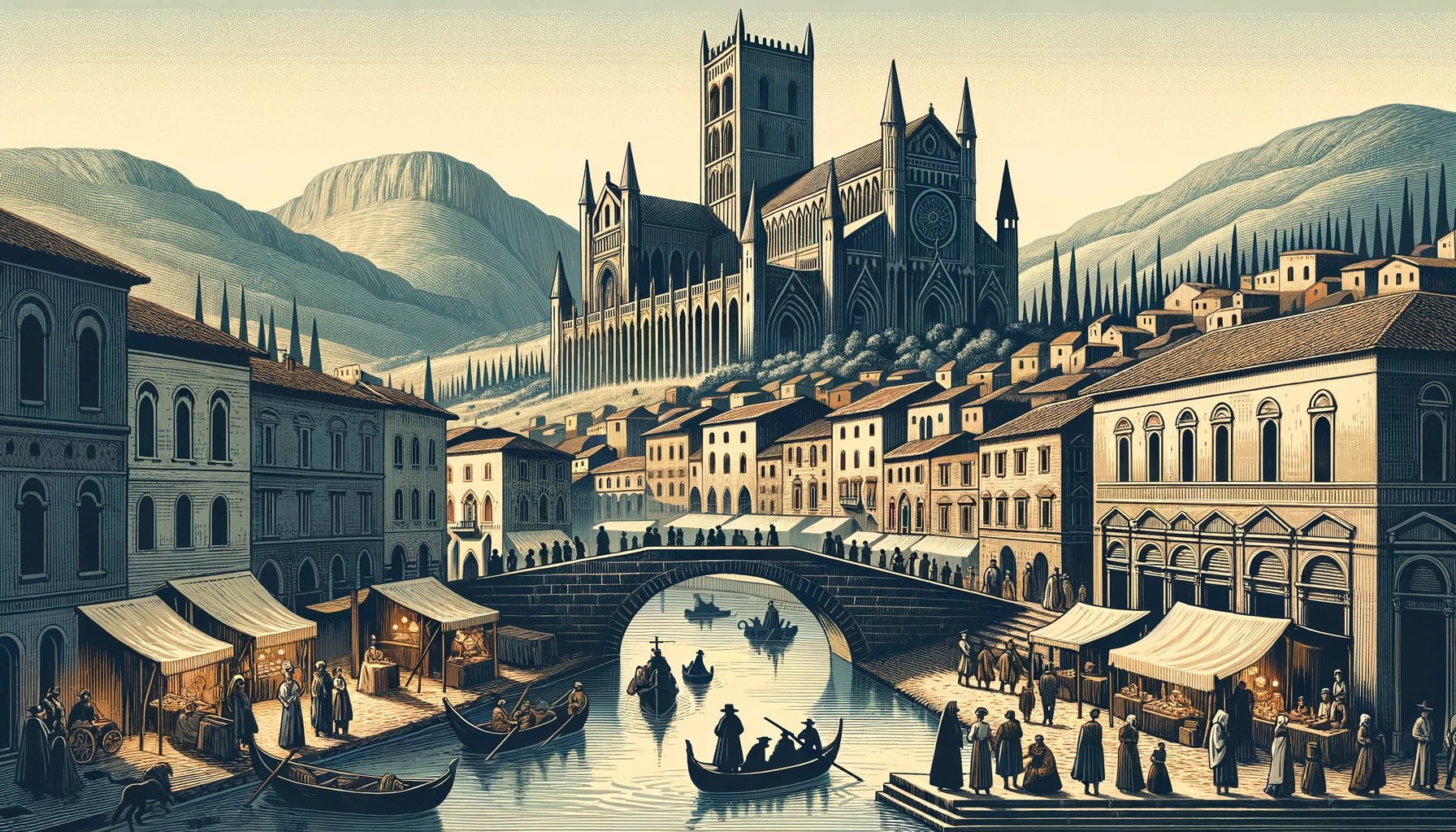
FAQ
Q1: What are some examples of ancient Italian city-states?
A1: Some examples of ancient Italian city-states include Pompeii, Ostia, Rome, Florence, Pisa, Milan, Genoa, and Siena.
Q2: What is the significance of ancient Italian city-states?
A2: The ancient Italian city-states played a crucial role in the development of urban settlements, governance structures, and trade in Italy. They also contributed to the fields of art, architecture, and urban planning.
Q3: What are the main tourist attractions in ancient Italian city-states?
A3: The main tourist attractions in ancient Italian city-states include Pompeii, Herculaneum, Ostia, and various historical landmarks in cities like Rome, Florence, and Venice.
Q4: Where can I find more information about ancient Italian city-states?
A4: You can find more information about ancient Italian city-states in resources such as Wikipedia, Atlas Obscura, and academic journals focusing on Italian history and archaeology.
Q5: How can I explore ancient Italian city-states today?
A5: You can explore ancient Italian city-states by visiting archaeological sites such as Pompeii, Herculaneum, and Ostia, as well as historical landmarks in cities like Rome, Florence, and Venice. There are also guided tours and museums that provide insights into the rich history and culture of these ancient cities.
- The Peasant St John Gastropub: London’s Hidden Gem - April 16, 2025
- Discover Your Personality: Egyptian Feet & Your Traits - April 16, 2025
- Vietnam One Richmond: Authentic Pho & Rolls Review - April 16, 2025
